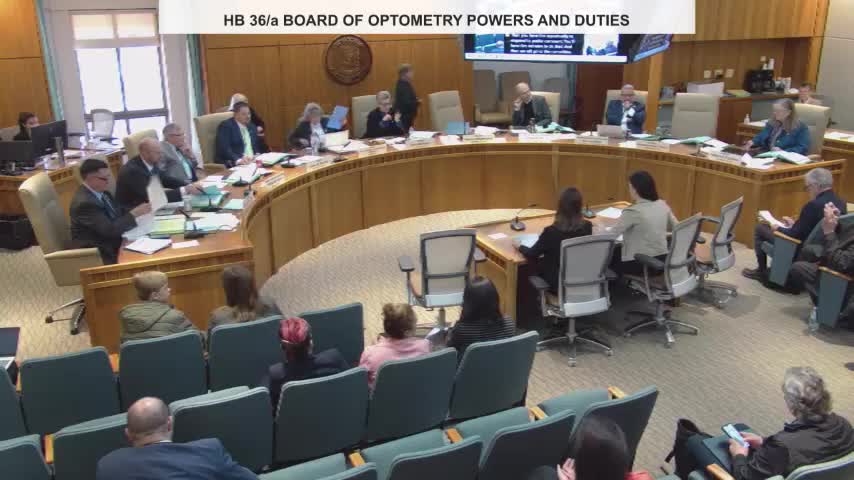New Mexico House Bill 36 allows optometrists to perform laser eye procedures
March 12, 2025 | Senate, Legislative, New Mexico
This article was created by AI summarizing key points discussed. AI makes mistakes, so for full details and context, please refer to the video of the full meeting. Please report any errors so we can fix them. Report an error »

A recent government meeting held by the New Mexico Legislature focused on House Bill 36, which proposes significant changes to the state's Optometry Act. This legislation aims to expand the scope of practice for optometrists, allowing them to perform certain in-office laser procedures that have not previously been permitted. The bill specifically targets treatments for glaucoma and post-cataract care, which are currently performed by ophthalmologists.
Supporters of the bill, including optometrists and their advocates, argue that allowing trained optometrists to conduct these procedures will improve access to timely eye care, especially for residents in rural and underserved areas. Dr. Sarah Bortz, an optometrist and expert witness at the meeting, emphasized that these outpatient procedures can be performed using the same equipment utilized in routine eye exams, thus reducing the need for patients to travel long distances for care. Proponents highlighted that optometrists have been safely performing similar procedures for years, with a strong safety record and no increase in malpractice rates in states where they have been granted such privileges.
The meeting also featured testimony from various stakeholders, including optometrists who shared personal stories about the challenges their patients face in accessing timely care. Many expressed frustration over long wait times for appointments with ophthalmologists, which can extend to several months. They argued that House Bill 36 would alleviate these issues by enabling optometrists to provide necessary treatments directly in their communities.
However, the bill faced opposition from the New Mexico Academy of Ophthalmology and other medical organizations. Critics raised concerns about patient safety, arguing that optometrists lack the extensive surgical training that ophthalmologists receive. They contended that allowing non-medical doctors to perform laser surgeries could compromise the quality of care and increase the risk of complications. Opponents also pointed out that there is no shortage of ophthalmologists in the state, with many patients able to access care within a few weeks.
The discussion highlighted a broader debate about the scope of practice for healthcare providers and the balance between improving access to care and ensuring patient safety. As the committee deliberates on House Bill 36, the outcome will have significant implications for eye care in New Mexico, particularly for those in rural areas who may struggle to receive timely treatment. The meeting underscored the importance of addressing both the needs of patients and the qualifications of healthcare providers in shaping future healthcare policies.
Supporters of the bill, including optometrists and their advocates, argue that allowing trained optometrists to conduct these procedures will improve access to timely eye care, especially for residents in rural and underserved areas. Dr. Sarah Bortz, an optometrist and expert witness at the meeting, emphasized that these outpatient procedures can be performed using the same equipment utilized in routine eye exams, thus reducing the need for patients to travel long distances for care. Proponents highlighted that optometrists have been safely performing similar procedures for years, with a strong safety record and no increase in malpractice rates in states where they have been granted such privileges.
The meeting also featured testimony from various stakeholders, including optometrists who shared personal stories about the challenges their patients face in accessing timely care. Many expressed frustration over long wait times for appointments with ophthalmologists, which can extend to several months. They argued that House Bill 36 would alleviate these issues by enabling optometrists to provide necessary treatments directly in their communities.
However, the bill faced opposition from the New Mexico Academy of Ophthalmology and other medical organizations. Critics raised concerns about patient safety, arguing that optometrists lack the extensive surgical training that ophthalmologists receive. They contended that allowing non-medical doctors to perform laser surgeries could compromise the quality of care and increase the risk of complications. Opponents also pointed out that there is no shortage of ophthalmologists in the state, with many patients able to access care within a few weeks.
The discussion highlighted a broader debate about the scope of practice for healthcare providers and the balance between improving access to care and ensuring patient safety. As the committee deliberates on House Bill 36, the outcome will have significant implications for eye care in New Mexico, particularly for those in rural areas who may struggle to receive timely treatment. The meeting underscored the importance of addressing both the needs of patients and the qualifications of healthcare providers in shaping future healthcare policies.
View full meeting
This article is based on a recent meeting—watch the full video and explore the complete transcript for deeper insights into the discussion.
View full meeting
